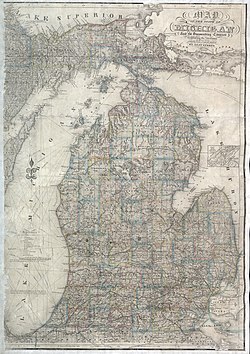
Michigan’s migration history is marked by distinct waves of movement that have shaped its cultural landscape and economic development. From early Indigenous communities drawn by the region’s abundant resources and strategic waterways, to European settlers pursuing fur trading and agricultural prospects, and later industrial laborers seeking opportunities in Detroit’s auto factories, migrants to Michigan have arrived with diverse motivations. Successive influxes of newcomers—from the Great Migration of African Americans escaping Jim Crow laws in the South to global refugees and technology workers—have further cemented Michigan’s status as a complex tapestry of peoples and traditions.
Research your ancestors on MyHeritage
List of Michigan historical migration routesList of Michigan historical migration routes
| Time Period | Ethnic Group | Origination Location | Arrival Location | Motivating Factors |
|---|---|---|---|---|
| Pre-contact – 17th century | Anishinaabe (including Ojibwe, Odawa, and Potawatomi) | Various regions of Eastern North America | Great Lakes region (including present-day Michigan) | Settlement along waterways for trade, resource abundance, and cultural migration patterns |
| 17th – 18th centuries | French fur traders and settlers | New France (primarily along the St. Lawrence River in modern-day Canada) | Detroit River region and interior fur trading posts | Fur trade opportunities, expansion of French colonial influence |
| Late 18th century – early 19th century | British administrators, traders, and settlers | Upper Canada (modern Ontario) and Great Britain | Southeastern Michigan (including Detroit, Mackinac Island) | Aftermath of the French and Indian War, control of strategic forts, mercantile expansion |
| Early – mid 19th century | “Yankee” settlers (primarily English-speaking Protestants) | New England and Upstate New York | Southern Lower Peninsula (Detroit, Ann Arbor, Lansing areas) | Availability of cheap farmland, expansion into the Northwest Territory, better economic opportunities |
| Mid – late 19th century | Dutch immigrants | The Netherlands | Western Michigan (notably Holland and Grand Rapids) | Religious freedom, escaping economic hardship, pursuit of farmland |
| Late 19th – early 20th century | German immigrants | Various German states | Southeastern Michigan and rural enclaves | Farmland acquisition, industrial jobs, chain migration from established German communities |
| Late 19th – early 20th century | Polish immigrants | Partitioned Poland (under German, Russian, and Austrian control) | Detroit, Hamtramck, and other industrial cities | Escaping political upheaval and economic hardship, seeking industrial employment, chain migration |
| Late 19th – early 20th century | Finns and other Northern Europeans[1] | Finland and Scandinavian countries | Upper Peninsula (mining towns such as Calumet, Ishpeming, Negaunee) | Jobs in copper and iron mining, escape from economic depression in Scandinavia |
| 1910s – 1970s | African Americans during the Great Migration | Southern United States (e.g., Alabama, Georgia, Mississippi) | Urban centers, especially Detroit and Flint | Industrial and auto manufacturing jobs, escape from Jim Crow segregation, search for better social and economic opportunities |
| Early – mid 20th century | Appalachian migrants | Kentucky, Tennessee, West Virginia | Detroit and other factory towns | Auto and manufacturing boom, higher wages, rural to urban migration for economic opportunity |
| Mid – late 20th century | Middle Eastern (Lebanese, Syrian, Iraqi, Yemeni) immigrants | Lebanon, Syria, Iraq, Yemen, and other parts of the Middle East | Greater Detroit area, notably Dearborn | Auto industry and business opportunities, chain migration, political instability in origin countries |
| 20th century – present | Mexican and other Latin American immigrants | Mexico and U.S. Southwest | Southwest Detroit and agricultural regions | Agricultural and industrial work, family reunification, expanding economic prospects |
| 21st century (continuing) | Global immigrants (including Asian, African, Eastern European) | Worldwide (e.g., India, China, Bosnia, Somalia) | Major metro areas (e.g., Detroit, Grand Rapids, Lansing) | Technology and service industry jobs, educational opportunities, refugee resettlement, diversity visas |
References
- ↑ Finns in Michigan. Finland Abroad

